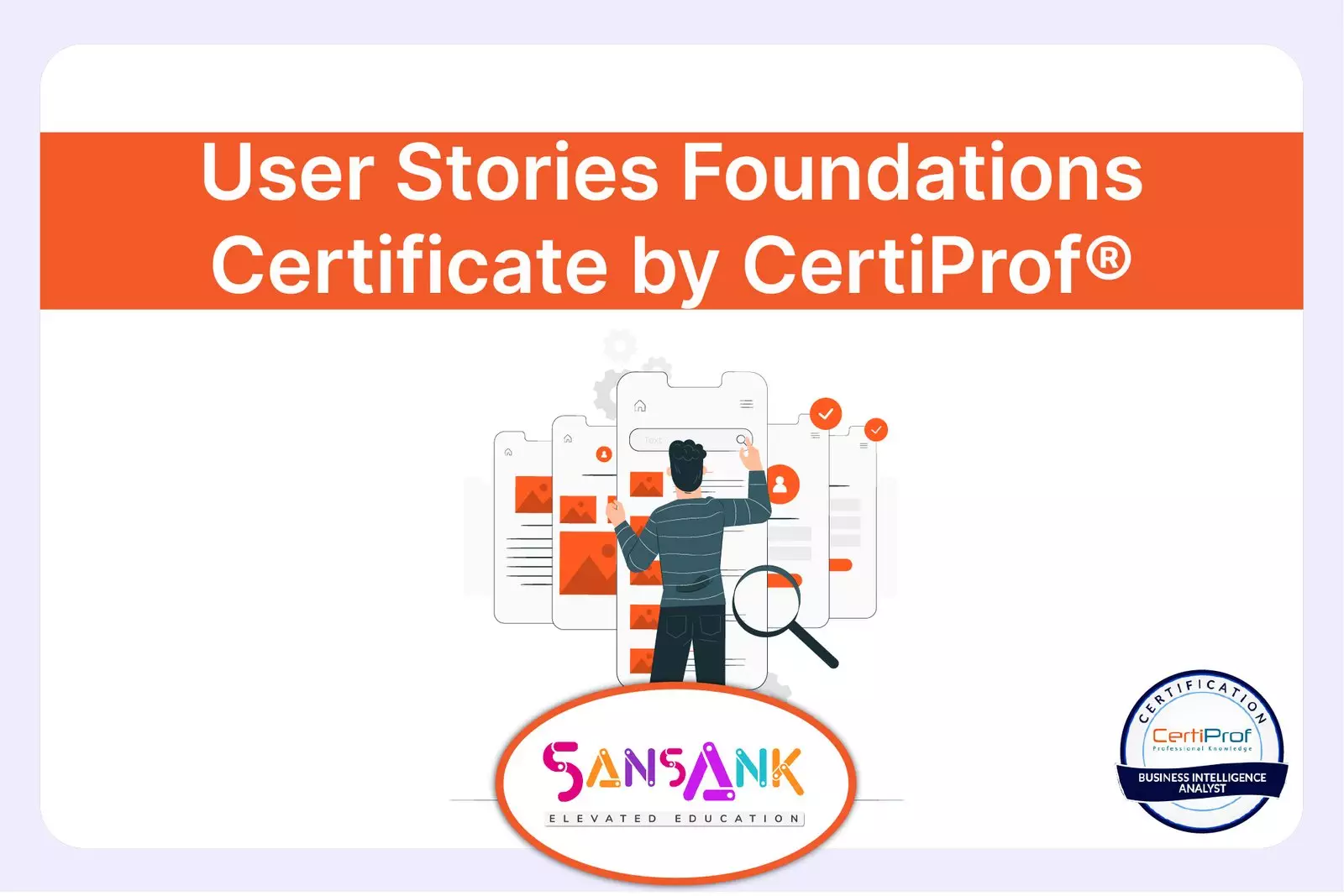User Stories Foundations Certificate by CertiProf®
About This Course
SansAnk Academy offers a comprehensive User Stories Foundations Certificate course. User stories are powerful tools for fostering cooperation and teaching valuable concepts. They establish a vital link between users or consumers and product or service developers. This relationship marks the initial significant step towards creating exceptional products that have a positive impact on users, potentially improving their lifestyles. This dynamic course/workshop provides fundamental knowledge about the main characteristics of User Stories as communication tools among team members and individuals interested in product or service development projects, whether from technology fields or other business areas.
What You'll Learn
- Understand the benefits of using user stories in uncertain and ambiguous environments
- Develop the skills necessary to use user stories as conversational tools among stakeholders
- Apply various ways of writing user stories • Recognize whether a user story meets the attributes of a good user story
- Employ different user story splitting techniques so that user stories can be developed in very short periods of time, from a few hours to a few days
- Use user stories to understand the value proposition of the product and its features from the beginning of the project
- Guide other members of your teams in the appropriate use of user stories in complex and adaptive contexts
- Get your “User Stories Foundations Certificate” (supporting the fundamental knowledge and application of User Stories
Course Details
- Price: 18,000/-
- Duration: 2 Weeks
- Batch Size: 1-5 Candidates
Certification Exam
- Format: Multiple choice
- Questions: 40
- Pass Score: 32/40 or 80 %
- Language: English
- Duration: 60 minutes
- Open Book: No
- Delivery: This examination is available online
- Supervised: It will be at the discretion of the Partner
Course Benefits
- Certiprof Certificates
- Life-time notes access
- Training recording
- BA community access
- Free knowledge sessions
Eligibility
This course is appropriate for anyone interested in using the techniques related to user stories, who are or will be involved in agile projects with frameworks such as Scrum; also, for those interested in projects that are in the value chain of providing features or requirements to product or service development teams
Curriculum
User stories are a technique used in agile software development to capture requirements from the perspective of the end user or customer. They are brief, informal descriptions of a feature or function that a user needs in order to accomplish a particular goal. User stories are meant to be simple, concise, and easily understandable, and they serve as a way to keep the focus of development on the needs of the user.
"User Stories: A New Order in Requirements" introduces a modern and user-centric approach to defining project requirements. It explores the characteristics and advantages of User Stories, which are concise and customer-focused descriptions of functionality. These stories revolutionize how teams gather and prioritize requirements in agile and Scrum methodologies, emphasizing the importance of delivering value to the end-users
"The Magic of User Stories" delves into the powerful benefits of using User Stories in software development and project management. This approach offers advantages such as enhanced collaboration, clear communication, and a customer-centric focus. This short introduction sets the stage for exploring how User Stories can transform the way teams plan, develop, and deliver products and services.
A user story typically consists of a simple statement that describes a specific feature or functionality from the perspective of the end-user, such as "As a user, I want to be able to log in with my email and password." It often follows the format: "As a [user], I want [goal] so that [reason]."
User stories are a way of capturing requirements in Agile software development. They were first introduced by Ron Jeffries in the 1990s as a way of focusing on the needs of the end user, rather than the technical details of the system. User stories typically consist of a brief description of a desired feature, along with the user's goals and motivations for using that feature.
User stories are a way of expressing software requirements from the perspective of the end user. They typically follow a simple format of "As a [user], I want [action], so that [goal]."
INVEST is a widely used acronym that stands for Independent, Negotiable, Valuable, Estimable, Small, and Testable, which are the characteristics of a well-written user story. Following the INVEST criteria helps ensure that user stories are effective, efficient, and contribute to the success of the project.
"Turning Epics into User Story Candidates" is a critical step in the Agile development process. It involves breaking down large and complex epics, like the "Consumer Credit Application," into smaller, manageable user story candidates. This allows for better planning, prioritization, and implementation of features. Comments and discussions around these candidates play a pivotal role in refining the requirements and ensuring alignment with project goals.
"Highly Effective User Stories (INVEST) II" explores advanced considerations in crafting efficient and valuable User Stories. It delves into various aspects, including potential challenges, division patterns, variations based on user types, browsers, platforms, and outsourced services. The module emphasizes the importance of addressing optional behaviors and optimizing value delivery. Additionally, it covers common team dysfunctions and presents the Whole-Team Approach Method for better User Story development. The focus remains on creating testable User Stories to ensure quality and alignment with project goals, with insights from creators in the field of Agile and User Story management.

Have Any Question?
“Unlock Your Potential Today! Connect with Us and Take the First Step towards a Brighter Future!”
- +91-6265160-006
- teachme@sansank.com
